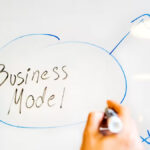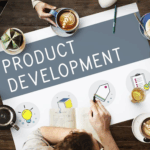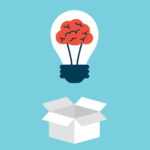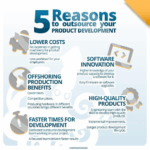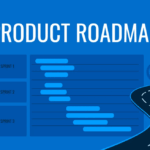“The devil is in the details.” This timeless saying holds regarding product management, where the difference between a mediocre product and a market leader lies in how well those details are executed.
In product management, understanding and utilizing product features is not just an option but an ultimate requirement. Are you trying to discover what is most important when developing easy-to-use products, or what makes a product stand out?
The answer often lies in your product’s creatively designed features. From intuitive UI designs to seamless integration, features can make or break your product’s success.
So, let’s learn how a thoughtful, innovative design with user-friendly features helps your product stand out.
What Are Product Features?
Let’s take Tesla’s Autopilot feature as an example. It’s not just a technological marvel but a game changer in the automotive industry. Ever wonder why this feature is such a record-breaker? Simply because it resonates with users!
This Autopilot feature:
- Addresses major pain points, like enhanced safety
- Offers unique value propositions, such as adaptive cruise control and automated driving capabilities.
Product features bridge the gap between your company’s vision and users’ needs. These features should define your product’s purpose, usability, and appeal, with simplicity and accessibility.

The Importance of Product Features
A product without meaningful features is like a ship without a sail, lacking direction. Here is why product features are essential:
-
Customer Satisfaction: Features link a product with user demands, integrating satisfaction and loyalty among the consumer.
-
Market Differentiation: Features make a product unique and act as a competitive differentiator.
-
Revenue Generation: High-value features justify premium pricing and boost profitability.
A survey conducted by Gartner in 2023 shows that 88% of consumers are likely to purchase products with unique functions that suit their needs. This statistic shows we must keep working on new features to release frequently.
Additionally, products that are easy to use tend to retain users more than the rest. The simplicity of the interface or a process can mean 65% greater customer satisfaction over products with complex features.
What Makes Features Stand Out?
Every feature has a distinct identity. A standout feature directly caters to the problem or improves the user experience meaningfully. For instance:
- WhatsApp’s End-to-End Encryption: This feature resonates with user concerns about privacy and security, which are crucial in today’s digital age.
- Instagram’s Reels: Short video content is popular in keeping its audience engaged through Instagram reels while competing with other platforms like TikTok.
The key to standout features lies in their usability, scalability, and emotional impact. Features that stimulate positive emotions like excitement, trust, or satisfaction leave a lasting impression.
Types of Product Features
Product features have various shapes inside, and understanding these types can help you use them effectively:
- Core Features: These are the main functions of the product, like messaging in a chat app.
- Differentiating Features: Features that set them apart from other products, such as Tesla’s autopilot or iPhone space ID.
- Auxiliary Features: Improve users’ experience but are not essential, such as dark mode in apps.
- Static Features: Functionalities stay the same across different versions of the product.
- Auxiliary Features: These updates evolve based on user feedback and technological advancement.
How to Define Winning Product Features?
Are you curious about defining the right features for a winning product? It involves a mix of creativity, strategic thinking, and user research.
Here are some tried and tested methods:
- Understand the Customer: Review the surveys, interviews, and analytics to uncover the pain point.
- Benchmark Against Competitors: Closely study competitors to highlight gaps and identify opportunities
- Prioritize Features: Use frameworks like the MoSCoW method (Must-have, Should-have, Could-have, Won’t-have) to decide what features must be prioritized.
When analyzing what is most important when developing easy-to-use products, user-centric design must be the focus. Test prototypes with the targeted customers to refine features and ensure they resonate with user demands and expectations.
A/B testing tools can further optimize feature implementation. By comparing the two versions, the teams can determine which best resonates with the users’ needs.
The Lifecycle of Product Features
Do you know that product features also have a life cycle?
- Discovery: Highlight the potential features through market research and user feed.
- Development: Design features keeping usability and scalability in mind
- Launch: Launch the features and gather initial user feedback
- Iteration: Further refine the features based on real-world usage.
- Retirement: Eliminate features that no longer meet product goals or user requirements.
Implementation of these stages ensures that the feature remains relevant and impactful. As the professionals highlighted, frequent delivery and discovery of product features are crucial for maintaining a competitive edge.
Stats and Trends in Feature Development
- User Retention: A report revealed that 70% of users abandon products due to missing or poorly executed features.
- Time-to-Market: Products that deliver innovative features within 6 months of ideation see a 45% higher adoption rate.
- Feature Overload: Interestingly, 64% of users prefer fewer features if they are intuitive and easy to use.
Examples of Remarkable Product Features
- Amazon’s 1-Click Ordering: This feature revolutionized online shopping by simplifying checkout.
- Google Photos’ Auto-Tagging: Google Photos seamlessly organizes photos, saving users time.
- Spotify’s Personalized Playlists: Creating a tailored music experience is just a few clicks away with features like Discover Weekly.
These examples clarify the most important concept when developing easy-to-use products: a seamless user experience that feels natural and intuitive.
Challenges in Feature Development
While creating exceptional features is rewarding, it comes with challenges:
- Balancing Complexity and Usability: A product should never be overloaded with features, as this would be confusing! In this process, the right balance has to be found.
- Resource Constraints: As in every project, the challenges of time, finance, and people limit the possibilities of feature development.
- Market Dynamics: Constant effort are required to stay ahead and maintain the competitive edge.
Final Thoughts
One of the finest product thinkers, Marty Cagan, once said, “The best product teams focus on outcomes, not output.” Products cannot be designed with their features as checklists; instead, the features should aim to define value to users and performance in line with goals and success.
Clear features can transform a product, whether you are rolling out a new product or continuously improving an existing product. Features are the link between the product concept and the user environment.
Are you ready to develop easy-to-use products to dominate the market? Contact BNMD as a reliable partner in your journey. Let us help you identify, design, and implement the features that will set your product apart in a competitive market.
Read More at Brand New MD
Want to learn more? Discover these informative reads from Brand New MD.



